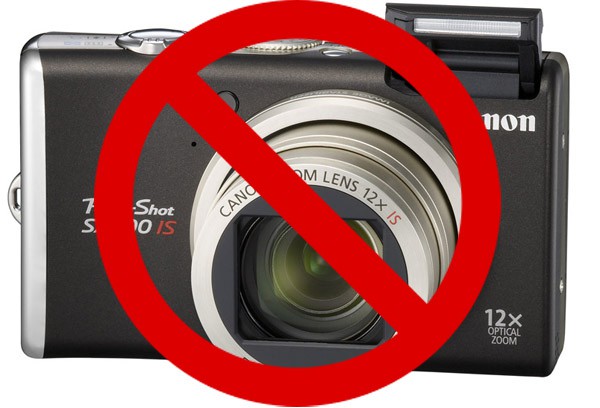Share
Journalist Forecasts the Death of the Digital Point-and-Shoot
There’s an interesting and somewhat heated discussion going on over at LinkedIn: Herb Greenberg, senior stocks commentator and journalist at CNBC...

There’s an interesting and somewhat heated discussion going on over at LinkedIn: Herb Greenberg, senior stocks commentator and journalist at CNBC, is predicting the “Death of the Point-and-Shoot Digital Camera.”
“If there was ever any doubt, it is now very clear that the digital still camera (at least the point-and-click) is going the way of the Polaroid,” writes Greenberg. “My take: R.I.P.”
Greenberg bases this on Molex’s recent earnings, which manufactures electronic components and cables. Molex reports that they’re expecting lower profits for its fiscal third quarter, and CEO Martin Slark said it’s in part because “digital still cameras are clearly being impacted by increased smartphone sales with built-in camera.”
The camera market is usually a strong source of revenue for Molex, so its reported decrease in sales has Greenberg questioning the demise of the point-and-shoot.
Of course, the shift from consumer camera to smartphone is hardly new news. The New York Times did a story in 2010, “In Smartphone Era, Point-and-Shoots Stay Home,” and a study one year later found that the percentage of photos taken with a smartphone grew from 17% to 27% in 2011.
Still, that same study found that point-and-shoots with optical zoom greater than 10x were up 16% that same year. Meaning, if consumers are going to buy a camera, they’re looking for something significantly better than what’s in their cellphone.
As is the case with these kinds of posts, the community was ready to lash out at Greenberg for his stance, saying that cellphone cameras will never replace the DSLR. But take note, that’s not the argument. The argument is that the everyday hobbyist – not the professional – is shifting its buying habits.
Maybe this consumer buying trend is why we’re seeing manufacturers more aggressively market their higher-end point-and-shoots, like the new Sony RX-1 and the Fujifilm X100S? (Sell more expensive cameras at lower volume, in a space that can be defended from smartphone encroachment.) That being said, plenty of pros turn to their beloved point-and-shoot for personal work or just for fun. And even there we’re seeing an increased preference for the iPhone.
So it seems to be a recurring question: what do increasingly improved smartphone cameras mean for the industry – both the manufacturers and the people who buy their cameras?



